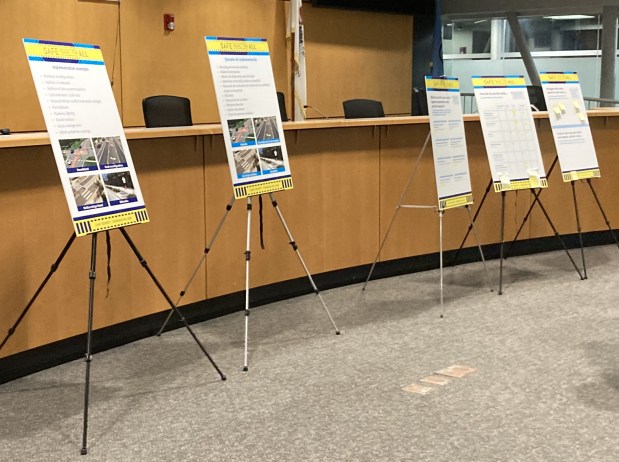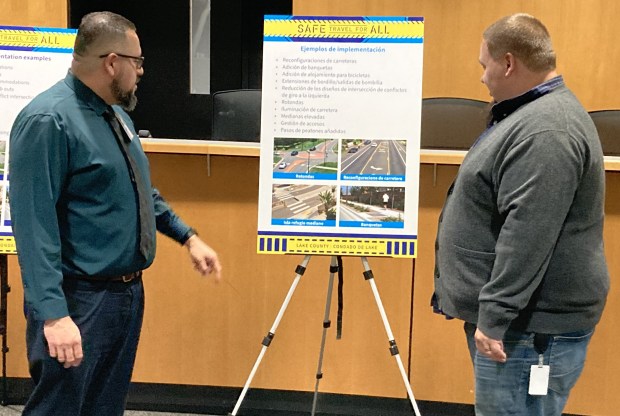With fatal and serious-injury traffic crashes on the rise locally and nationwide, Lake County is gathering information to develop a plan to improve roadway safety which will ultimately unlock federal funding to make the roads safer.
Mike Klemens, the manager of transportation planning for the Lake County Division of Transportation, said the initial phase of the program — called Safe Travel for All — is gathering information to assemble the plan that the county and its municipalities can follow.
“There is an increase in fatal and severe-injury crashes,” Klemens said. “It’s not unique to us. There are a lot of factors, like an increase in distracted driving, speeding and the (larger) size of vehicles.
Working with the county are a number of municipalities, law enforcement officials, educators, community groups and more, as well as the Chicago Metropolitan Agency for Planning and the Illinois Department of Transportation. Gathering information from the public is a key component, officials say.
Community members offered their ideas and concerns during a public meeting of the Lake County Safety Action Plan steering committee Thursday at Waukegan City Hall, making known their concerns about areas they consider dangerous.
Hoping to complete the data-gathering this summer, Klemens said the task force will craft a plan which will be submitted for approval by the U.S. Department of Transportation. Once ratified, not only the county but its municipalities can apply for grants to enact safety projects.
“The grants are available as long as they follow the plan,” he said. “It will already be approved by the (U.S.) Department of Transportation.”
As members of the public entered the room, they viewed a variety of mounted posters with both information and designs of potential traffic ideas, and were asked to offer their comments. There were maps where they could attach notes.
Adam Carson, who operates the Waukegan location of Supermercado Gonzalez with his wife, Nydia Gonzalez-Carson, was one of the people writing comments. He said he sees a lot of issues near the store on Grand Avenue, a busy state-operated thoroughfare.
“It’s very busy, and I see a lot of traffic accidents,” he said. “We are very concerned. We have a running club. We see a lot of drivers who don’t look out for runners or bikers. Maybe we need lanes for running and biking.”
Michael Hoff, a Waukegan resident at the meeting, said he has noticed an uptick in poor driving habits since 2020. Speeding and distracted driving are two of the things he has noticed since the lull of driving in the early days of the coronavirus pandemic.
“The police should try to spend more time catching speeders,” Hohf said. “It can take two hours to investigate an accident. If they’re doing that, they can’t set up a speed trap.”

Enforcement is one of the things Klemens and Jesus Alquicira, Waukegan’s city engineer, said is needed to improve traffic safety. The other two of “the three Es” are education and engineering. All three will be part of the safety plan.
While vehicles are bigger, with far fewer sedans on the road replaced by bigger sport utility vehicles (SUV), Klemens said the chances of a crash turning fatal or causing serious injury increase.
“If a pedestrian is hit by an SUV doing 30 mph rather than a sedan, the outcome is going to be very different,” he said.
Alquicira said engineering can come into play when roads and sidewalks are made differently. While speed bumps can play a role, they are a more severe remedy than items like a bump out which extends the curb farther into the street.
“It brings people farther into the crosswalk,” Alquicira said. “The driver has a better view of the pedestrian.”
Not that many years ago, Klemens said distractions like cell phones and large screens on the dashboard did not exist. Now they are becoming more commonplace, creating a larger number of distractions.
As more and more data is gathered, he said some is already well-known, such as the fact more than 50% of fatal or serious-injury crashes take place daily between 7 and 11 p.m., and between 2 and 4 a.m.
“That’s when people are out to dinner, and out at the bars,” Klemens said.
“Education and enforcement,” Alquicira added immediately.





